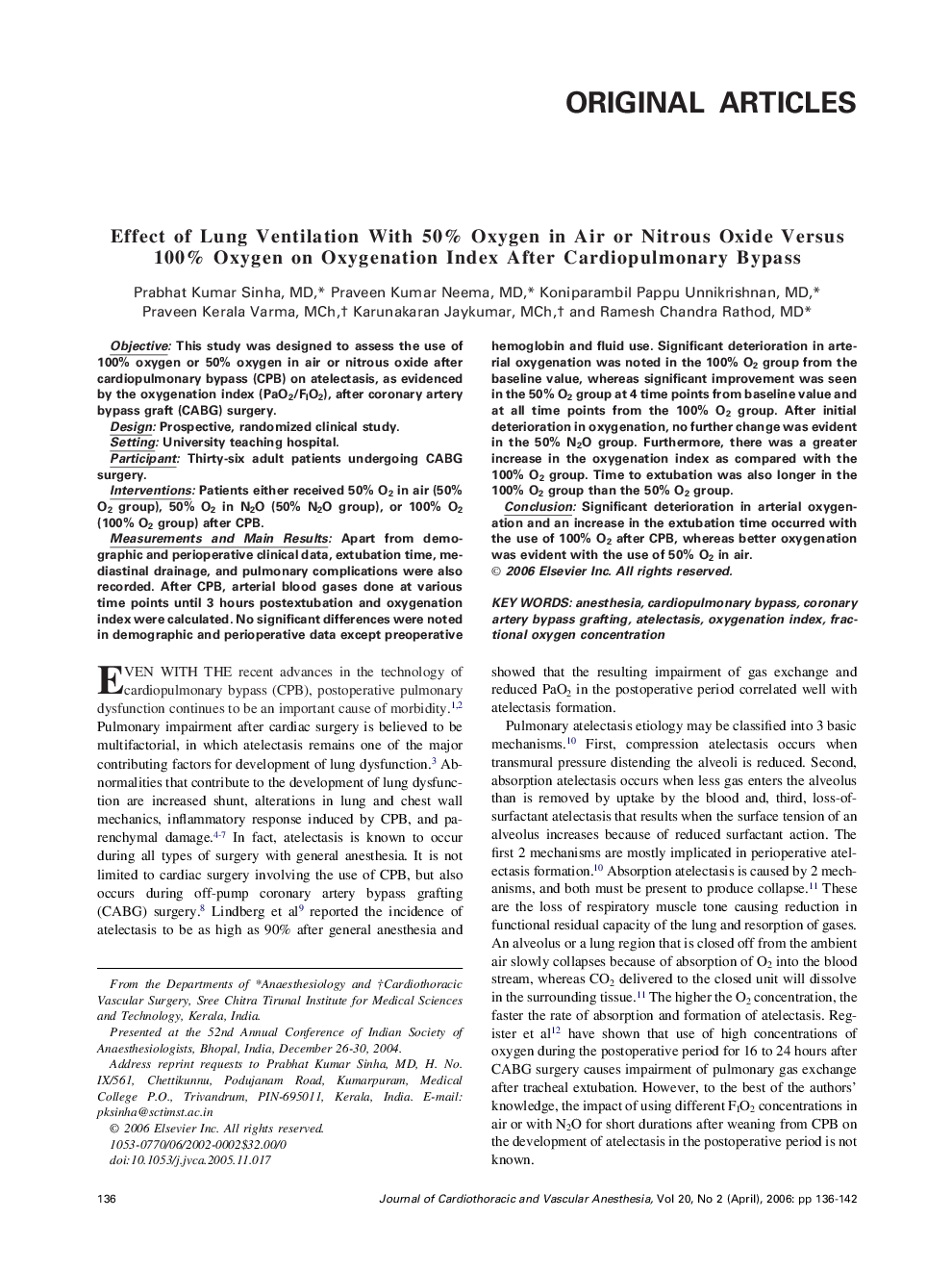| Article ID | Journal | Published Year | Pages | File Type |
|---|---|---|---|---|
| 2761987 | Journal of Cardiothoracic and Vascular Anesthesia | 2006 | 7 Pages |
Objective: This study was designed to assess the use of 100% oxygen or 50% oxygen in air or nitrous oxide after cardiopulmonary bypass (CPB) on atelectasis, as evidenced by the oxygenation index (PaO2/FIO2), after coronary artery bypass graft (CABG) surgery.Design: Prospective, randomized clinical study.Setting: University teaching hospital.Participant: Thirty-six adult patients undergoing CABG surgery.Interventions: Patients either received 50% O2 in air (50% O2 group), 50% O2 in N2O (50% N2O group), or 100% O2 (100% O2 group) after CPB.Measurements and Main Results: Apart from demographic and perioperative clinical data, extubation time, mediastinal drainage, and pulmonary complications were also recorded. After CPB, arterial blood gases done at various time points until 3 hours postextubation and oxygenation index were calculated. No significant differences were noted in demographic and perioperative data except preoperative hemoglobin and fluid use. Significant deterioration in arterial oxygenation was noted in the 100% O2 group from the baseline value, whereas significant improvement was seen in the 50% O2 group at 4 time points from baseline value and at all time points from the 100% O2 group. After initial deterioration in oxygenation, no further change was evident in the 50% N2O group. Furthermore, there was a greater increase in the oxygenation index as compared with the 100% O2 group. Time to extubation was also longer in the 100% O2 group than the 50% O2 group.Conclusion: Significant deterioration in arterial oxygenation and an increase in the extubation time occurred with the use of 100% O2 after CPB, whereas better oxygenation was evident with the use of 50% O2 in air.
